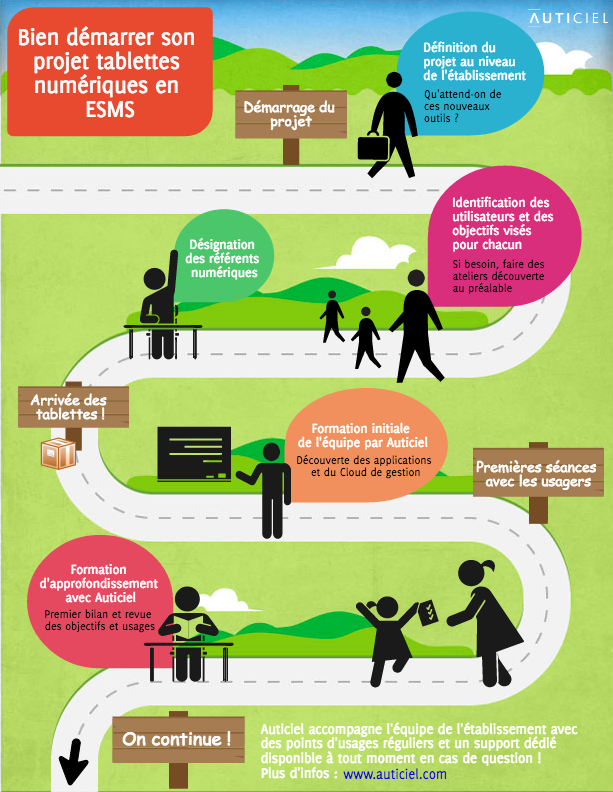Getting off to a good start with a tablet project in a medical-social facility
Published: 06 October 2023

Tablets and software are arriving en masse in medico-social structures (IME, SESSAD, FAM, MAS, etc.) as genuine tools to help people become more autonomous. Useful for children and adults with autism, ASD, intellectual disabilities and/or other cognitive or mental disorders, touchscreen tablets are a vehicle for best practice. Genuine disability compensation tools (augmented communication, help with spatio-temporal reference points, etc.), they support and develop autonomy, learning and leisure activities.
However, the tablet is not a miracle tool. Its impact is real if its use is relevant. In order to achieve results, a number of principles must be observed, in line with the
HAS and ANESM recommendations
:
- Prepare for the arrival of tablets: train carers in the use of the tool and plan long-term monitoring with evaluation indicators and time for multidisciplinary team discussions.
- 1 tablet = 1 individual: choose applications and define uses according to each person’s projects and objectives. As the tablet is a landmark and contains private content, it should be as individual as possible. We don’t share paper communication folders, so why do it with tablets?
- Customize applications to suit individual objectives, environments, sensitivities and capabilities
- Integrate the family and use the tool on the move: as a compensatory tool, the tablet must follow the person wherever he or she goes.
Here are five key steps to get your tablet project off to a good start:
Further information
- Article: DIGITAL: A SOLUTION FOR PEOPLE WITH MENTAL AND COGNITIONAL DISABILITIES?
- Article : HOW TO USE TOUCHSCREEN TABLETS IN THE IME? FEEDBACK.
- Article : LE PACK TABLETTE AMIKEO : UNE TABLETTE ET DES APPS QUI RÉVOLUTIONNE LE QUOTIDIEN DES PERSONNES AVEC AUTISME
- Link to HAS and ANESM recommendations: http: //www.has-sante.fr/portail/jcms/c_1224096/fr/autisme-la-has-et-l-anesm-recommandent-un-projet-personnalise-d-interventions-pour-chaque-enfant
